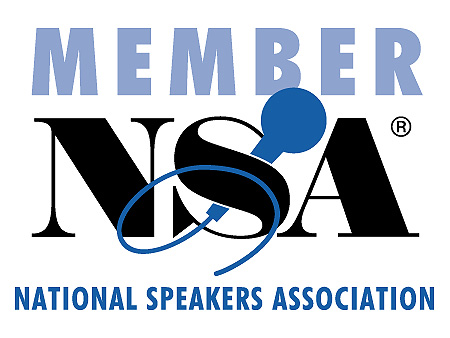Leaders should always strive to increase their knowledge, not just about leadership, but also about other subjects that interest them. Here is an annotated list of books I’ve found useful. This list is far from exhaustive, but I hope it will provide you some ideas of books and authors to pursue. Check back from time to time for updates.
The Bible
Interestingly, this single book contains every leadership lesson that is in every other leadership book I’ve ever read. It’s also the oldest, most continually read work on any list of management and leadership books. That must mean something.
Turn The Ship Around by L. David Marquet, Greenleaf, Austin.
This is a good text illustrating how changing to a participatory leadership approach can be challenging yet very rewarding.
The Silent Language of Leaders: How Body Language Can Help – or Hurt – How You Lead by Carol Kinsey Goman, Josey-Bass, San Fransisco.
This is the best book on body language and non-verbal communication I’ve read. Goman has produced an interesting and well documented text on a subject that is essential for successful leaders.
Lead Your Boss: The Subtle Art of Managing Up by John Baldoni. AMACOM, New York.
Though Baldoni is talking about helping your boss succeed, the tips and techniques he presents are applicable to any leader. In fact, all leaders should read this whether they think they’re helping the boss or not.
Long Fuse, Big Bang: Achieving Long-Term Success Through Daily Victories by Eric Haseltine. Hyperion, New York.
Haseltine presents lessons in how to get your goals accomplished by using a long-term approach. He shares his experiences from a pretty impressive leadership resume.
Start With Why: How Great Leaders Inspire Everyone to Take Action by Simon Sinek. Portfolio, New York.
Sinek hits the nail on the head! Leaders must know why they do what they do. Having a clear vision, and being able to express that vision is critical to success.
Drive: The Surprising Truth About What Motivates Us by Daniel H. Pink. Riverhead Books, New York.
Every leader needs a copy of this work on the shelf. There are several great “management gurus” worth reading, but this work brings the best of them together under a single cover. Also, while I don’t disparage other work like Hersey’s One Minute Manager, his work with Blanchard on situational leadership is masterful and one of the most important concepts for a leader to understand. This is actually one of a series by Goldratt on his Theory of Constraints. This used to be required reading in some B-Schools. The Goal series of books are written as novels, but they provide some very good information about constraints. Rewarding employees is not a new concept, but Gostick and Elton provide a well researched look at how and when and what is effective. Critical information for all levels of leadership. Buckingham and Coffman take a look at management done differently. They show that effective management doesn’t always follow the accepted ways. While I don’t agree with their take on management vs. leadership, the rest of the book is valuable. Collins has given us a great look at a group of 11 companies that have gone from good performance to really great performance. He’s done very good research into what seems to be the cause of that greatness. I have a little difficulty with a couple of his picks, primarily based on their later record (one went out of business) but the points he makes are vital. He does discuss those two companies in … In How the Mighty Fall, Collins takes a look at companies that were doing very well but then collapsed. He’s identified five stages of decline that are spot on. If you’ve studied leadership for more than about 10 minutes, you’ve no doubt heard of John C. Maxwell. He’s written many good books on leadership, all of them providing great examples and good techniques. One of the things I like about Maxwell’s writing is that he doesn’t mind telling the reader what he learned from his own mistakes. This is essentially a biography of Jack Welch who achieved fame as the long-time CEO of GE. The book is a good example of a look at high level leaders and what Welch feels causes success. Toyota isn’t quite the icon of success it once was, but it’s still doing pretty well (#1 auto maker int he world as of this writing). I believe leaders can learn a lot from what Toyota did to get to where they are. If you’re like me, you probably get tired of trying to follow the latest management fad. I don’t think the Lean movement is really a fad but like all such ideas, it only works when correctly implemented. I admit that some of the success stories cited in Lean Thinking may not be so successful today, but the principles presented by Womack and Jones are just as valid. Another Maxwell offering which I list separately because it’s a little different. The book doesn’t imply that you don’t know how to think, but points out that maybe you need to think a little differently. Kellerman looks at two aspects that are often overlooked in the study of leadership. First, bad people can be good leaders, but there really is such a thing as a bad leader. Second, followers have a lot to do with whether a bad leader has any success. Therefore there are bad followers as well. I question some of her examples, but the points she makes are solid. This isn’t really a leadership book, but leaders should have an understanding of the economy. Sowell provides a good definition of many economic principles. And it’s actually readable! This book might cause you to reexamine some of the things you thought you knew. This is a great look at U.S. History. You say you don’t like history? Worry not, this is actually interesting. For some reason, our history seems to get garbled and re-written over the years. Schweikart and Allen’s work unravels historical misconceptions. The book is very well documented; this isn’t just a couple of guys opinions. Leadership takes on a whole different flavor when the leaders holds the lives of thousands of people in his hands. This is an excellent view of a type of leadership that most of us will thankfully never have to experience. Pagonis was in charge of logistics for Operation Desert Shield and Desert Storm. Though this is a autobiography of his entire life, there are a lot of great lessons for leaders. Another autobiography of a military leader, this book is another great look at high level leadership. President Lincoln led the country through what was undoubtedly the most diffucult time in American history. This is a collection of short vignettes which are credited to Lincoln. A word of caution though; Lincoln is credited with saying much more than he did. I can’t vouch for the absolute veracity of all the quotes attributed to him.The Goal by Eliyahu M. Goldratt and Jeff Cox. North River Press, Great Barrington, MA. 1992.
The Carrot Principle by Adrian Gostick and Chester Elton. Free Press, New York. 2009.
First, Break all the Rules: What the World’s Greatest Managers do Differently, by Marcus Buckingham and Curt Coffman. Simon and Schuster, New York. 1999.
Good to Great: Why Some Companies Make the Leap…and Others Don’t by Jim Collins. Collins, New York. 2001.
How the Mighty Fall: And Why Some Companies Never Give In by Jim Collins. Harper Collins, New York, 2009.
The 21 Irrefutable Laws of Leadership by John C. Maxwell. Nelson Business, Nashville. 1998.
The GE Way Fieldbook by Robert Slater. McGraw Hill, New York. 1998.
The Toyota Way: 14 Management Principles From The World’s Greatest Manufacturer by Jeffrey K. Liker. McGraw-Hill, New York, 2004.
Lean Thinking: Banish Waste and Create Wealth in Your Corporation by James P. Womack and Daniel T. Jones. Free Press, New York, 2003.
How Successful People Think by John C. Maxwell. Center Street, New York, 2009.
Bad Leadership: What It Is, How It Happens, Why It Matters by Barbara Kellerman. Harvard Business School Press, Boston, 2004.
Basic Economics: A Common Sense Guide to the Economy by Thomas Sowell. Basic Books, New York, 2007.
A Patriot’s History of the United States: From Columbus’s Great Discovery to the War on Terror by Larry Schweikart and Michael Allen. Sentinel, New York, 2004.
<A General’s Life: An autobiography by General of the Army Omar N. Bradley by Omar N. Bradley and Clay Blair. Simon and Schuster, New York. 1983.
Moving Mountains: Lessons in Leadership and Logistics from the Gulf War by Lt General William G. Pagonis with Jeffrey L. Cruikshank. Harvard Business School Press, Boston. 1992.
My American Journey by Colin Powell with Joseph E. Persico. Random House, New York. 1995.
Patton’s Principles: A Handbook for Managers who Mean It by Porter B. Williamson. Simon and Schuster, New York. 1982.<



